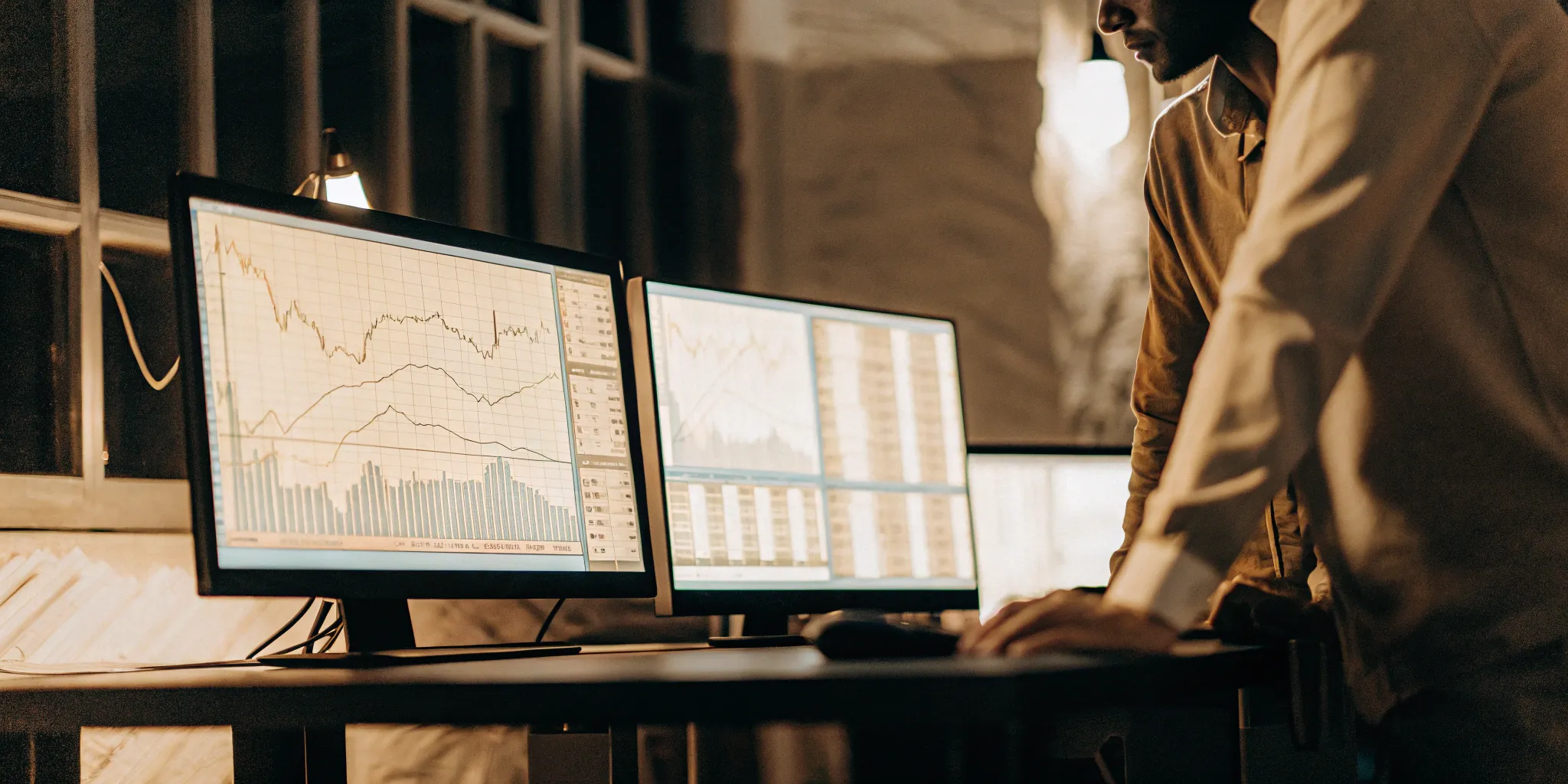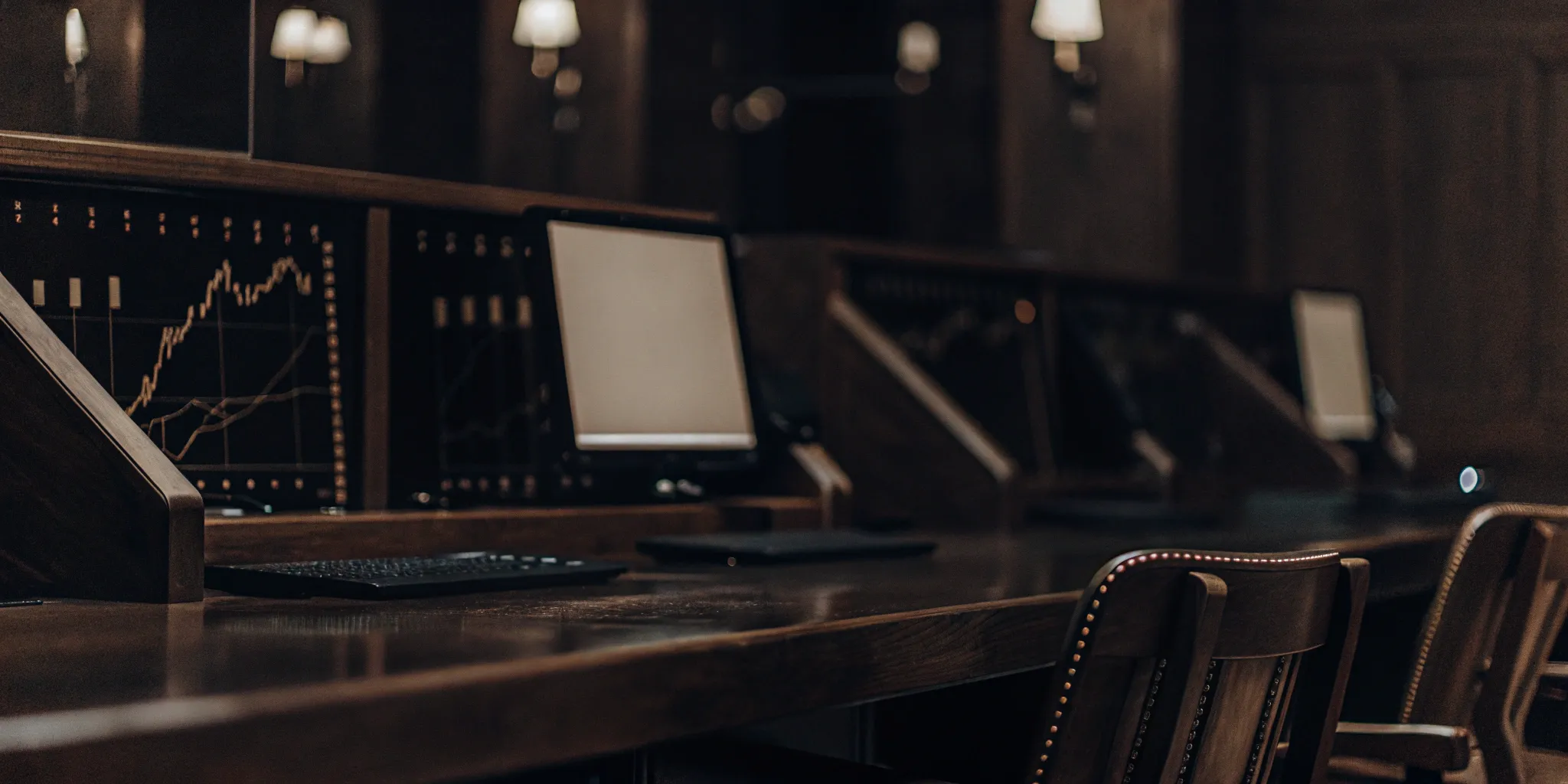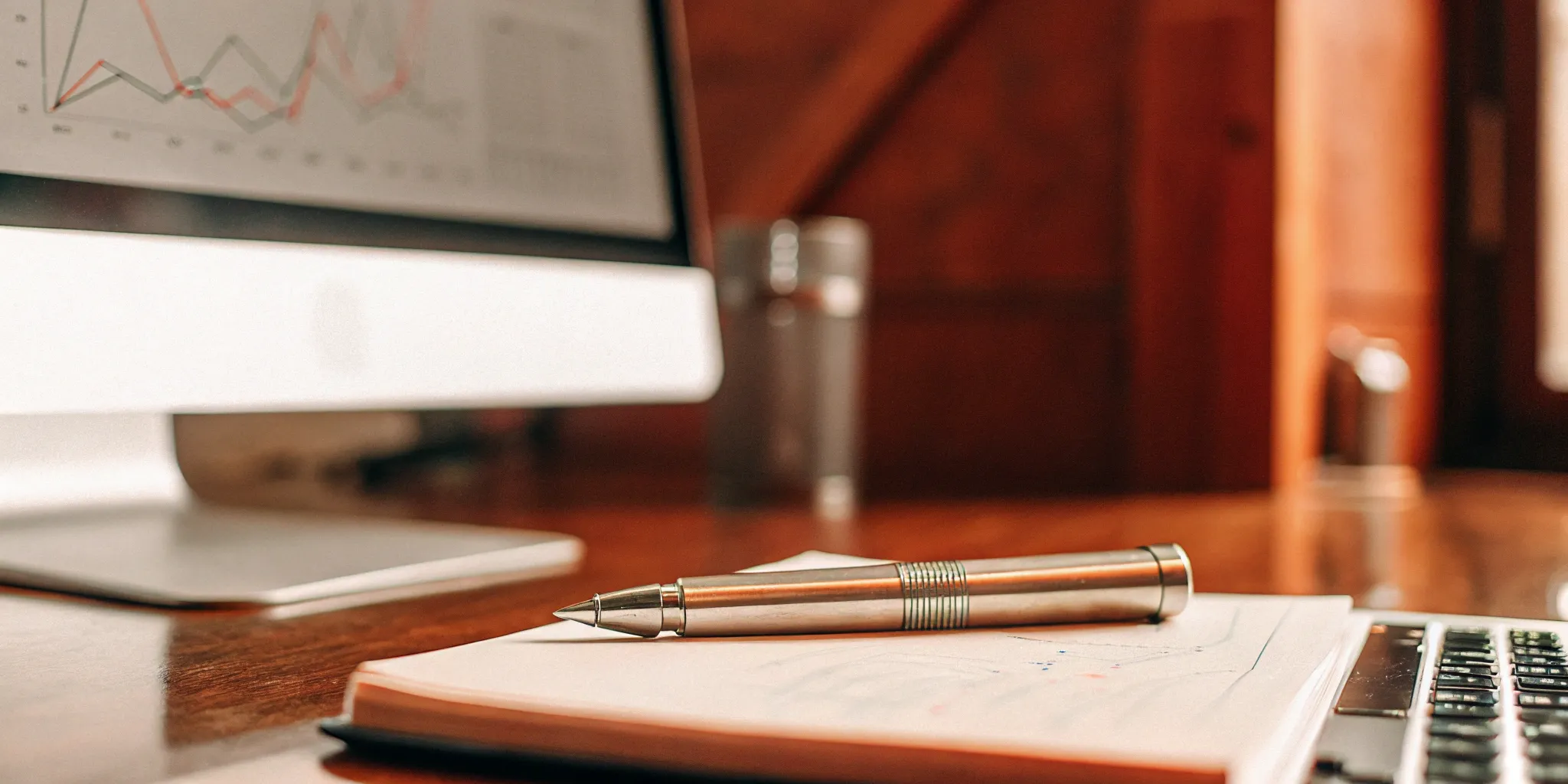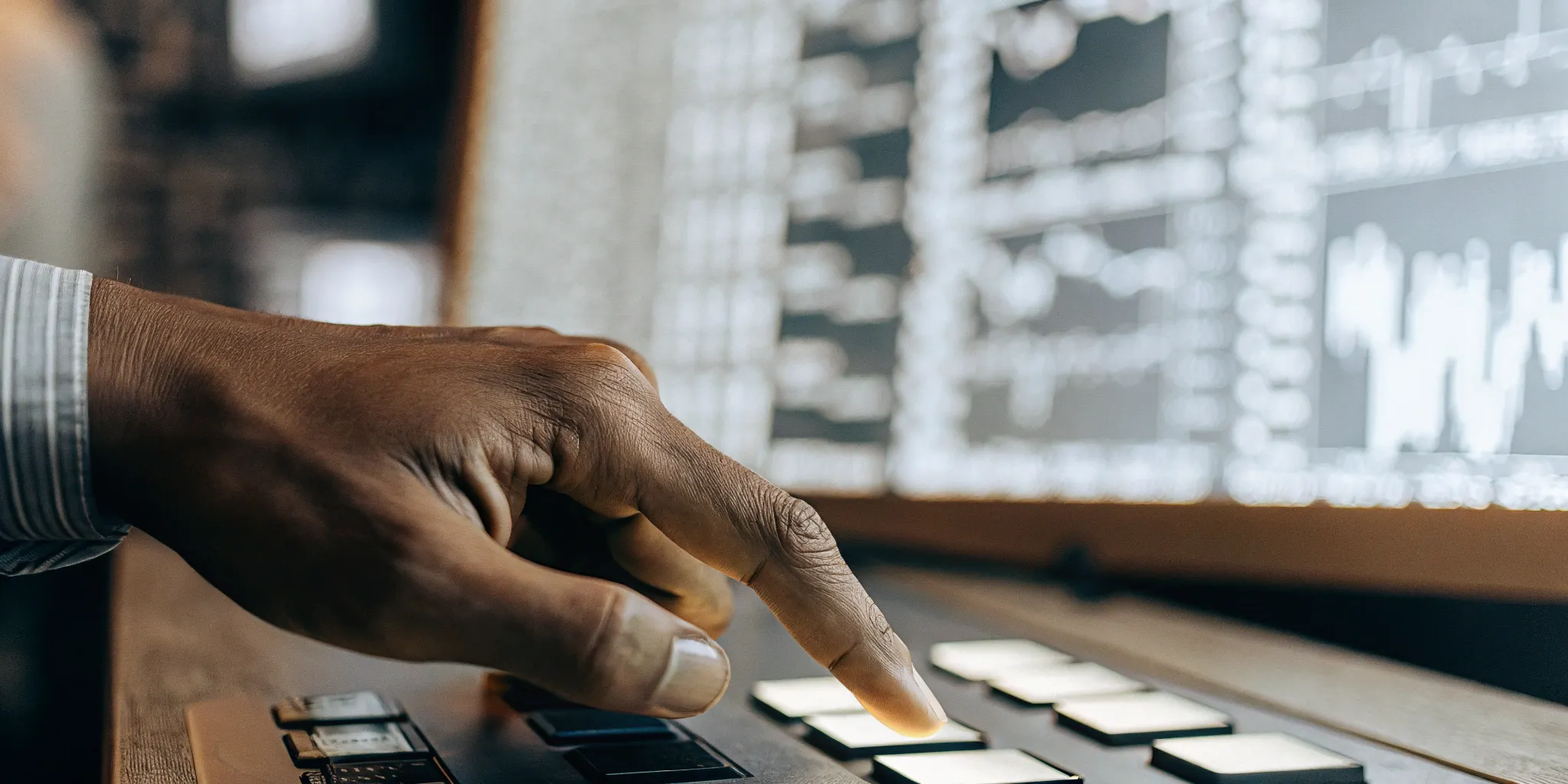So, you’ve built your algorithmic trading strategy. Now, how do you know if it’s actually any good? Before you risk real money, backtesting offers a crucial safety net. It’s like taking your trading algorithm for a test drive using historical market data. This process helps you understand how your strategy would have performed in the past, revealing its strengths, weaknesses, and potential for profit. This comprehensive guide will walk you through how to backtest algo trading effectively, covering key metrics, common pitfalls, and advanced techniques. Whether you’re a coding whiz or prefer user-friendly platforms, we’ll help you choose the right approach for your needs and empower you to make data-driven decisions in the fast-paced world of algorithmic trading.
Key Takeaways
- Refine your trading strategies with backtesting: Use historical data to understand your strategy’s potential strengths and weaknesses. This preparation helps you make informed decisions and manage risk effectively. Remember, past performance isn’t a guarantee of future success, but it’s a crucial first step.
- Look beyond simple profit and loss: Analyze key metrics like drawdown, Sharpe ratio, and win rate to gain a complete picture of your strategy’s performance and risk profile. Explore advanced techniques like walk-forward optimization and Monte Carlo simulations for a deeper understanding.
- Transition to live trading strategically: Validate your strategy with paper trading before using real capital. Start small and monitor your performance closely, adjusting your approach as needed. Continuous learning and adaptation are essential for navigating the ever-changing market.
What is Backtesting in Algorithmic Trading?
Backtesting is a crucial process in algorithmic trading where you test your trading strategy on historical data. Think of it as a simulator that lets you see how your strategy would have performed in the past. This helps you identify patterns, refine your approach, and potentially eliminate unnecessary losses before risking real money in the live market. Backtesting bridges the gap between a theoretical trading model and its practical application, giving you a clearer picture of its potential effectiveness.
Definition and Purpose
Backtesting allows you to evaluate and refine your strategies using historical data, essentially giving you a sneak peek into how they might perform in the future. It’s a critical step in algorithmic trading because it helps you understand the strengths and weaknesses of your strategy before deploying it in live trading. This process helps you make more informed decisions, manage risk more effectively, and increase your chances of success. By simulating different market conditions, you can identify potential problems and adjust your strategy accordingly. Learn more about successful backtesting.
Benefits of Backtesting
Backtesting offers several advantages for traders. It helps minimize risk by giving you a clearer understanding of your strategy’s potential before you commit capital. It also allows you to refine your approach iteratively. As you analyze the historical performance, you can identify areas for improvement and optimize your strategy for various market scenarios. This knowledge and preparation can also help you avoid emotional decisions during live trading, leading to more disciplined and consistent results. Discover backtesting secrets. By understanding how your strategy has performed in the past, you’re less likely to panic and make impulsive choices when faced with real-time market fluctuations. Backtesting empowers you to make data-driven decisions and approach the market with greater confidence. For a comprehensive guide on backtesting and optimizing algo trading strategies, check out this resource.
How to Backtest an Algorithmic Trading Strategy
This section outlines the steps involved in backtesting an algorithmic trading strategy. We’ll cover everything from defining your strategy to analyzing the results.

Define Your Trading Strategy
Before you begin backtesting, clearly define the rules of your trading strategy. This includes entry and exit conditions, position sizing, and any other relevant parameters. Specificity is key. For example, instead of saying “buy when the price goes up,” define exactly what “up” means – is it a percentage increase, a breakout above a specific moving average, or something else? Documenting these rules helps ensure consistent backtesting and prevents you from inadvertently introducing biases later on. Think of this process as creating a detailed recipe for your trading algorithm.
Collect and Prepare Historical Data
Accurate and relevant historical data is the foundation of effective backtesting. The data should cover the time period you want to analyze and include all the necessary information for your strategy, such as price, volume, and any other relevant indicators. Ensure the data is clean, consistent, and free of errors. Depending on your strategy, you might need to adjust for things like stock splits or dividends. The quality of your data directly impacts the reliability of your backtesting results.
Choose a Backtesting Platform
Selecting the right backtesting platform is crucial. Consider factors like ease of use, data compatibility, available features, and cost. Some platforms offer advanced features like Monte Carlo simulations and optimization tools, while others are more basic. Choose a platform that aligns with your technical skills and the complexity of your strategy. Many platforms offer free trials, allowing you to experiment before committing.
Implement and Run Your Strategy
Once you have your platform, implement your trading strategy within its framework. This typically involves coding your rules into the platform’s language or using a visual interface. Carefully review your implementation to ensure it accurately reflects your defined strategy. After implementation, run the backtest over your chosen historical data period. The platform will simulate trades based on your strategy and generate performance metrics. Remember, the goal of backtesting is to see how your strategy would have performed, not to perfectly predict the future. It’s a way to assess the potential of your strategy, not a guarantee of future returns.
Analyze and Interpret Results
The results of your backtest provide valuable insights into the potential strengths and weaknesses of your strategy. Analyze key metrics like profit and loss, drawdown, win rate, and Sharpe ratio. Don’t just focus on overall profitability. Understanding how your strategy performs under different market conditions is essential. Identify periods of strong and weak performance and try to understand the underlying reasons. Use these results to refine your strategy and improve its robustness. Backtesting is an iterative process, so be prepared to revisit and adjust your strategy based on your findings. This analysis is where you separate a potentially successful strategy from one that needs further refinement.
Key Metrics to Evaluate Backtesting Results
After running your backtest, analyzing the results is crucial. Don’t just focus on profit. A range of metrics will give you a more complete picture of your strategy’s potential.
Profit and Loss
This may seem obvious, but it’s essential to look at the overall profit and loss generated by your strategy during the backtesting period. Are the returns consistent or are there periods of significant gains and losses? Remember, consistent profitability is key, even if the gains appear smaller at first. Reviewing the P&L helps you understand the potential return on investment your strategy could deliver.
Drawdown and Volatility
Drawdown measures the peak-to-trough decline during a specific period, essentially showing how much your trading capital could decrease. Volatility, on the other hand, measures the price fluctuations of an asset. A highly volatile strategy might experience large swings in P&L, which can be emotionally challenging even if the overall trend is positive. Understanding drawdown and volatility helps you assess the risk associated with your strategy. A good risk management plan is essential for any trader.
Sharpe Ratio and Other Performance Indicators
The Sharpe Ratio helps you understand your strategy’s risk-adjusted return. It tells you how much return you’re getting for each unit of risk you’re taking. A higher Sharpe Ratio generally indicates a better strategy. Other useful indicators include the Sortino ratio (which focuses on downside risk) and the Calmar ratio (which considers the maximum drawdown). Analyzing these metrics provides a more nuanced view of your strategy’s performance beyond simple profit and loss.
Win Rate and Risk-Reward Ratio
Win rate is the percentage of trades that are profitable. While a high win rate can be appealing, it doesn’t tell the whole story. The risk-reward ratio measures the potential profit of a trade compared to the potential loss. A strategy with a lower win rate but a higher risk-reward ratio can still be very profitable. Consider these metrics together to understand the overall effectiveness of your trading strategy. A solid understanding of risk and reward is crucial for successful trading.
Common Backtesting Pitfalls and Biases to Avoid
Even with sophisticated tools, backtesting isn’t foolproof. Understanding potential pitfalls helps you interpret results realistically and create more robust trading strategies. Let’s explore some common traps:
Optimization Bias
Optimization bias, sometimes called curve fitting, happens when you tweak a strategy’s parameters solely to improve its historical performance. Imagine testing hundreds of variations, finding one that performed exceptionally well in the past. This doesn’t guarantee future success—it often leads to overfitting, where the strategy performs poorly in live trading because it’s too tailored to past market conditions. It’s like memorizing answers for a specific test—you might ace that test, but you won’t necessarily grasp the underlying concepts. A good backtesting approach focuses on strategies that adapt to different market conditions.
Look-Ahead and Survivorship Bias
Look-ahead bias sneaks in when your backtest uses information that wouldn’t have been available at the time of a trade. For example, using the closing price of a stock to make a decision when your strategy would only have had access to the real-time price during the trading day. It’s like peeking at the answers before finishing the exam. Survivorship bias occurs when you test your strategy only on assets that are currently trading, excluding those that have failed. This creates an overly optimistic view, ignoring the risks associated with investments that didn’t survive. A robust backtest accounts for all market possibilities, including failures.
Psychological Bias and Overconfidence
Backtesting offers a detached environment, free from the emotional pressures of live trading. This can lead to psychological biases, like overconfidence. Impressive historical results can create a false sense of security, making you less likely to manage risk effectively in real-time. Remember, backtesting removes the emotional pressure of real money—fear and greed can significantly influence live trading decisions. Honest self-assessment and understanding your biases are crucial for successful algorithmic trading.
Insufficient Trade Volume
A small number of trades in your backtest can create misleading results. Statistical significance requires a substantial sample size. Imagine flipping a coin only ten times—you might get seven heads, suggesting a biased coin, but that’s likely random chance. Similarly, a trading strategy tested on too few trades might appear profitable due to luck, not a sound approach. Aim for a large enough sample size (hundreds or even thousands of trades) for a more reliable evaluation.
Advanced Backtesting Techniques for Robust Strategies
Once you’ve grasped the basics of backtesting, exploring more advanced techniques can further refine your trading strategies and improve their real-world performance. These methods help address some of the limitations of standard backtesting and offer a more nuanced understanding of how your strategy might perform in live markets.
Walk-Forward Optimization
Standard backtesting often involves optimizing parameters based on the entire historical dataset. This can lead to overfitting, where the strategy performs exceptionally well on past data but poorly in live trading. Walk-forward optimization mitigates this risk by dividing your historical data into in-sample and out-of-sample periods. You optimize your strategy’s parameters using the in-sample data and then test it on the subsequent out-of-sample data. This process is repeated, rolling the optimization window forward, simulating how your strategy adapts to changing market conditions. This iterative approach helps create a more robust and adaptable strategy.
Monte Carlo Simulations
While standard backtesting evaluates performance based on a single historical dataset, Monte Carlo simulations explore a range of possibilities. This technique generates thousands of hypothetical variations of your historical data, each reflecting slightly different market conditions. Running your strategy through these simulations provides a distribution of potential outcomes, giving you a clearer picture of the best- and worst-case scenarios. This helps you understand not just the average return but also the potential for large drawdowns or periods of underperformance.
Stress Testing and Scenario Analysis
Even the most sophisticated backtests can’t perfectly predict future market behavior. Stress testing and scenario analysis help you prepare for unexpected events. Stress testing involves subjecting your strategy to extreme market conditions, like sudden crashes or spikes in volatility. Scenario analysis focuses on specific hypothetical events, such as a significant interest rate hike or a major geopolitical development. By observing how your strategy performs under these challenging circumstances, you can identify weaknesses and make adjustments to improve its resilience. This might involve refining your risk management rules, adjusting position sizing, or incorporating additional filters to avoid unfavorable trades during turbulent periods.
Popular Backtesting Tools and Platforms
Choosing the right backtesting platform depends on your coding skills, budget, and the complexity of your strategies. Let’s explore some popular options:
Cloud-Based Solutions
Cloud-based platforms offer convenience and scalability, often with minimal setup. They typically provide a user-friendly interface with pre-built tools and indicators, making them suitable for traders of all skill levels. Many also offer features like strategy optimization and automated trading integration.
Some popular cloud-based backtesting platforms include:
- TradingView: Known for its charting, TradingView also offers strategy backtesting. It’s a good option for visual learners who prefer a chart-centric approach.
- Blueshift: This platform caters to more sophisticated traders and quantitative analysts, providing advanced tools for backtesting, optimization, and automated execution.
- QuantConnect: QuantConnect offers a cloud-based environment for developing and backtesting algorithmic trading strategies. It supports multiple programming languages and provides access to historical data.
Desktop Software
Desktop software provides more control and customization than cloud-based solutions. These platforms are often preferred by experienced traders who require advanced features and flexibility.
Here are a few examples:
- MetaTrader 4/5 (MT4/5): While primarily known for live trading, MT4/5 also offers backtesting capabilities for expert advisors (EAs), particularly in the forex market.
- NinjaTrader: This platform is popular among futures traders and offers advanced charting, backtesting, and automated trading.
- MultiCharts: MultiCharts is another powerful desktop platform for advanced backtesting and trading across various asset classes.
Programming Languages and Libraries
For traders comfortable with coding, programming languages like Python offer flexibility in backtesting. Numerous libraries provide the tools and functions to build custom backtesting environments.
Some popular options include:
- Python with libraries like Backtrader and Zipline: Backtrader is a popular Python framework specifically designed for backtesting. Zipline is another powerful library often used for quantitative finance and algorithmic trading research. These tools allow granular control over the backtesting process.
- R with packages like quantmod and PerformanceAnalytics: R is a statistical programming language with packages for financial analysis. Quantmod provides tools for downloading and manipulating financial data, while PerformanceAnalytics offers functions for calculating performance metrics.
By understanding the different types of backtesting tools available, you can choose the platform that best suits your needs and experience. Remember that backtesting is iterative, and the right tools can significantly enhance your ability to develop robust trading strategies.
Backtesting Best Practices
After covering the technical aspects of backtesting, let’s discuss some best practices to ensure your backtests are reliable and provide valuable insights for a robust trading strategy.
Ensure Data Quality and Integrity
The saying “garbage in, garbage out” perfectly applies to backtesting. The quality of your historical data is paramount. Inaccurate or incomplete data will lead to misleading results and potentially disastrous live trading outcomes. Source your data from a reputable provider and ensure it’s clean, complete, and covers a wide range of market conditions to thoroughly assess your strategy’s performance under various scenarios. Remember to scrub your data for errors and outliers that could skew your results. Accurate simulations require clean data.
Make Realistic Assumptions
Backtesting allows you to explore hypothetical scenarios, but it’s crucial to ground your assumptions in reality. Factor in transaction costs, slippage (the difference between the expected price and the actual execution price), and potential latency issues. Don’t assume your trades will always fill at your desired price. Consider the impact of market conditions like liquidity and volatility on your strategy’s execution. A realistic backtest accounts for the practicalities of trading, preparing you for real-world scenarios.
Continuously Improve and Refine Your Strategy
Backtesting is an iterative process. It’s a cycle of testing, analyzing, and refining. After each backtest, carefully examine the results, identify weaknesses, and adjust your strategy accordingly. Perhaps your entry or exit rules need tweaking, or your position sizing could be optimized. Don’t hesitate to experiment and make changes based on your findings. The goal is to continuously improve your strategy’s performance and robustness. This ongoing refinement is key to success in algorithmic trading.
Moving From Backtesting to Live Trading
After rigorous backtesting, it’s time to assess your strategy in a live market environment. Jumping straight into live trading with real capital can be risky, so let’s outline a structured approach to ensure you’re well-prepared.
Paper Trading and Strategy Validation
Before risking real money, validate your strategy with paper trading. This simulated environment lets you execute trades using virtual funds, mirroring real-market conditions without financial consequences. Paper trading provides a valuable opportunity to familiarize yourself with your strategy’s behavior in a dynamic setting and identify any hidden flaws or unexpected outcomes that backtesting might have missed. This stage is crucial for building confidence and experience.
Transition to Real-Time Execution
Once you’re comfortable with your strategy’s performance in paper trading, gradually transition to live trading. Start with a small amount of capital—an amount you can afford to lose—and closely monitor your strategy’s behavior. As you gain experience and confidence, and as your strategy performs well, you can gradually increase your trading capital. Remember, real-time trading introduces factors like slippage and commissions that can impact your overall returns. Be prepared to adjust your strategy as needed to account for these real-world variables. Maintaining a disciplined approach and sticking to your predefined rules is key.
Monitor and Adjust Live Performance
Even with thorough backtesting and paper trading, continuous monitoring and adjustment are essential in live trading. Market conditions constantly change, and your strategy needs to adapt. Regularly review your trading performance, noting key metrics like profit/loss, drawdown, and win rate. Don’t hesitate to adjust your strategy based on your observations. Backtesting helps bridge the gap between theoretical models and practical application, but real-world market dynamics always introduce new challenges. View live trading as an ongoing learning process and remain adaptable to maintain long-term success. Regularly reviewing your trading journal can help you identify patterns and areas for improvement.
Addressing Backtesting Misconceptions
Backtesting is a crucial step in developing a robust algo trading strategy, but it’s important to approach it with a realistic understanding of its limitations. Let’s clear up some common misconceptions.
The Fallacy of Guaranteed Success
Backtesting helps minimize risk and refine your trading strategies before deploying real capital. Think of it as a dress rehearsal—it allows you to practice and identify potential issues. However, even a perfectly rehearsed play can flop on opening night. Similarly, backtested results don’t guarantee future success in live trading. Market conditions constantly shift, and what worked in the past might not work in the future. A profitable backtest is a good starting point, not a guarantee of riches. For a deeper dive into successful algorithmic trading and backtesting secrets, check out this helpful resource.
The Importance of Quality Data
Imagine trying to bake a cake with spoiled ingredients—you won’t get the desired result. Similarly, backtesting relies heavily on the quality of your historical data. Using inaccurate or incomplete data is like using those spoiled ingredients—it leads to misleading results. High-quality tick data (at least 99.9% accuracy) is essential for reliable backtesting. This article on backtesting drawbacks further explores the importance of data quality.
Overcoming Human Bias in Manual Backtesting
Manual backtesting, while offering more control, introduces the risk of human bias. We’re all susceptible to biases, and in trading, these can lead to skewed results. For example, you might unconsciously avoid simulated losses or take trades you wouldn’t in a live scenario due to emotions like fear or greed. It’s crucial to acknowledge these biases and strive for objectivity during manual backtesting. Consider using automated backtesting tools to minimize emotional influences and achieve more realistic results. Automated systems remove the human element, providing a more objective assessment of your strategy’s potential. For more insights into the drawbacks of manual backtesting, refer to this informative piece.
How to Choose the Right Backtesting Approach
Picking the right backtesting method is just as important as the process itself. It’s about finding the approach that best suits your trading style, the complexity of your algorithm, and the resources you have available. Think of it like choosing the right tool for a job – a hammer is great for nails, but not so much for screws.
One of the first things to consider is the timeframe of your strategy. Are you a day trader making quick decisions, or a swing trader holding positions for days or weeks? This will influence the type of historical data you need and how granular your backtesting should be. High-frequency strategies demand tick data, capturing every price change, while longer-term strategies might do just fine with daily or even weekly data.
Next, think about the complexity of your algorithm. A simple moving average crossover strategy can be backtested relatively easily with basic software or even a spreadsheet. But if your algorithm involves machine learning or complex statistical models, you’ll need a more sophisticated backtesting platform with robust computational power. Some platforms even offer integrations with programming languages like Python, giving you greater flexibility and control.
Your available resources also play a role. While some excellent free backtesting tools exist, they may have limitations in terms of data, features, or processing speed. If you’re serious about algorithmic trading, investing in a professional-grade platform can be worthwhile, providing access to high-quality data, advanced analytics, and reliable support.
Finally, don’t underestimate the importance of iterative refinement. Backtesting isn’t a one-and-done deal. It’s a continuous process of testing, tweaking, and retesting your strategy under different market conditions. The right backtesting approach should allow you to easily make adjustments and see how those changes impact your results. This iterative process helps you gain confidence in your strategy and reduces the likelihood of emotional reactions during live trading. By carefully considering these factors, you can choose a backtesting approach that sets you up for success in the world of algorithmic trading.
Related Articles
- Algorithmic Trading Tutorials: A Practical Guide – FN Capital
- Futures Algorithms: Your Guide to Automated Trading – FN Capital
- Real-World Algorithmic Trading Examples & Strategies – FN Capital
- What is Automated Trading Software? Your Guide to Algorithmic Trading – FN Capital
- Algo Trading for Beginners: Your Step-by-Step Guide – FN Capital
Frequently Asked Questions
Is backtesting a guarantee of future trading profits?
No. Backtesting helps assess how a strategy might have performed historically but doesn’t guarantee future success. Markets are dynamic, and past performance isn’t indicative of future results. Think of it as a practice run, not a crystal ball. It helps you refine your approach and understand its potential, but live trading introduces real-world variables that can impact outcomes.
What’s the most important factor to consider when backtesting?
Data quality. Reliable historical data is the foundation of a good backtest. Using inaccurate or incomplete data will lead to flawed results and potentially poor trading decisions. Ensure your data is clean, comprehensive, and from a reputable source. Think of it like building a house – a weak foundation compromises the entire structure.
What are some common mistakes to avoid in backtesting?
Over-optimizing your strategy to fit past data (curve fitting), using information that wouldn’t have been available at the time (look-ahead bias), and ignoring failed investments (survivorship bias) are common pitfalls. Also, be wary of psychological biases like overconfidence – impressive backtesting results don’t guarantee real-world success.
What’s the difference between backtesting and paper trading?
Backtesting analyzes historical data to see how a strategy would have performed. Paper trading simulates real-time trading with virtual money, allowing you to test your strategy in a dynamic market environment without risking real capital. Backtesting is like studying a map, while paper trading is like taking a test drive before a long journey.
What are some popular backtesting platforms?
TradingView is good for beginners and visual learners. Blueshift and QuantConnect offer more advanced features for experienced traders. For those comfortable with coding, Python libraries like Backtrader and Zipline provide flexibility and control. The best platform depends on your individual needs and technical skills.





